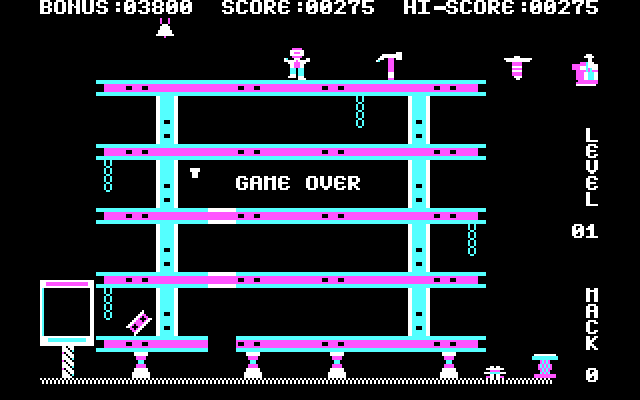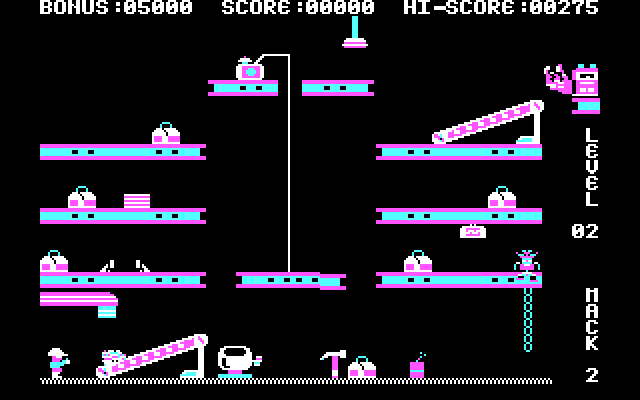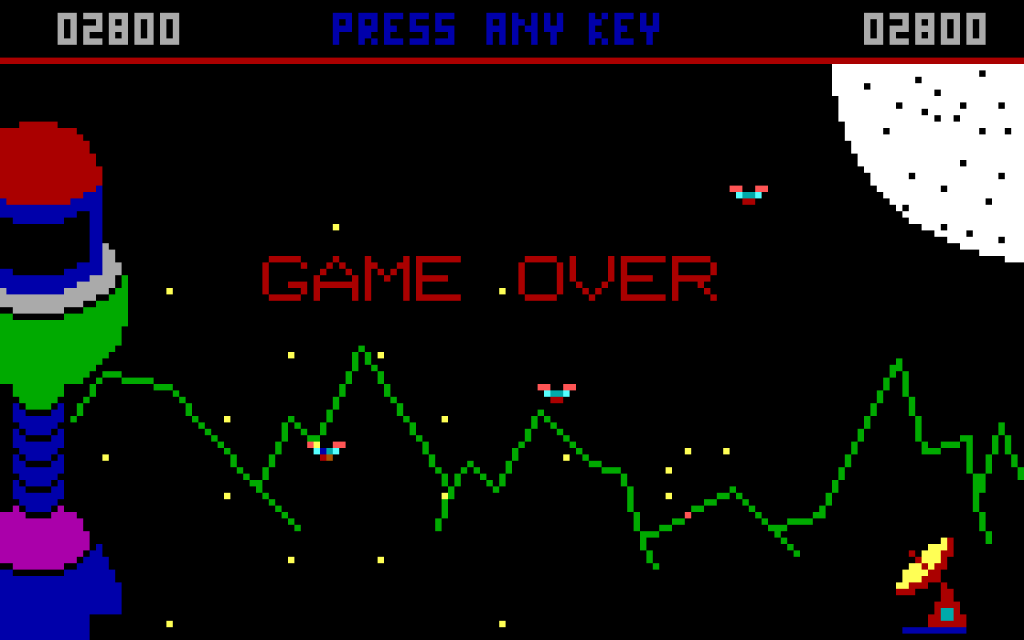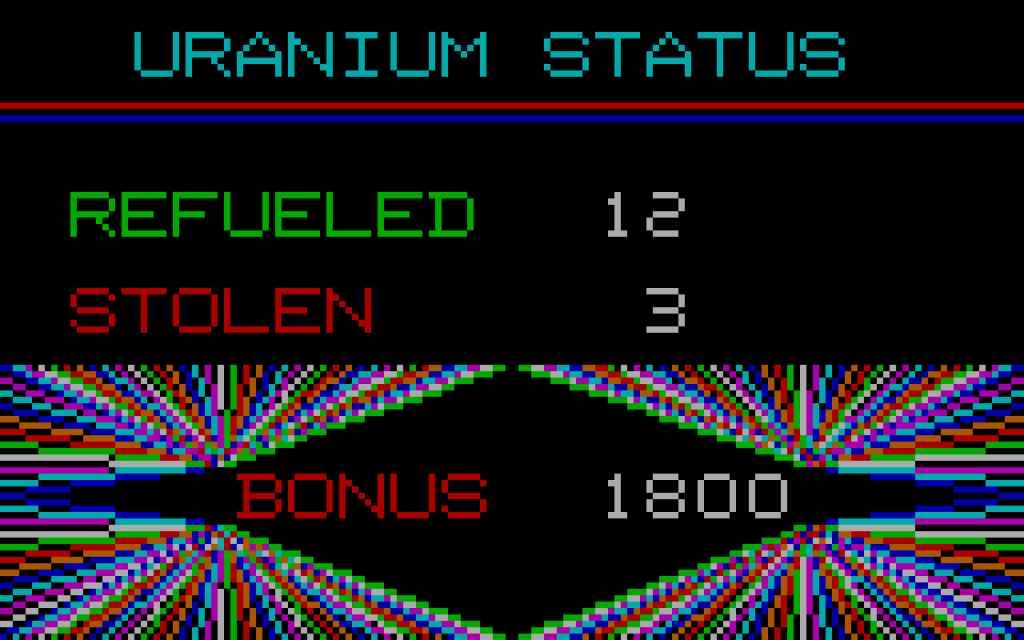The early IBM PC was not really all that good at playing games, it was after all primarily designed for businesses. Despite this many developers did make games for them, although they were typically very limited by the capabilities of the PC. I didn’t get to play any of these older games when they were new, mostly because I was quite young, but also because we got our first PC in 1990. Being a 386sx @ 20Mhz it wouldn’t play most of them.
Because many of these older games are simpler and shorter I’m rolling up a few of them into a single post. The games for today are Bowling, Hardhat Mack and Moonbugs.


Bowling is a simple text-mode ten-pin bowling game. There’s not really a whole lot to say about it. After you enter a number for the game speed, the number of players and their names it jumps straight into the game. The players take turns to bowl, which basically is just striking a key when the ball lines up with where you’re aiming. The pins fall down in a deterministic way that eliminates much of the variety you would usually have. This is partly because the ball is the same size as the pins and there isn’t much vertical resolution in the alley. This one is simple enough it may have been implemented in BASIC, although there isn’t any way to know for sure.




Hardhat Mack was originally an Apple II game made by Michael Abbot and Matthew Alexander in 1983, it was ported for the IBM PC the next year by Dana How and Kevin Gilmore. It’s a single screen platform game starring the titular character Hardhat Mack, who is working on a construction site. Like in Donkey Kong, Mack has a different task in each level to complete. There are three different stages to complete before the game starts again on a slightly harder difficulty level.
Technically it looks much like most other games of the era, with 4 colour CGA graphics and PC speaker sound. The artwork looks fine, but the technical implementation seems a bit slow and suffers from colour distortion due to the way the sprites are drawn and moved, most likely using the XOR operation. It also affected my ability to get a good screen shot whilst playing in dosbox.
The controls takes a little getting used to, you press a directional key and mack continues to move in that direction until you press down (for stop) or change direction. Mack and the enemies move fairly slowly, so it’s not a particularly action packed experience, but there is some challenge avoiding the enemies and completing the level. That being said other games like Freddy’s Rescue Roundup have more and deeper game play.





Moonbugs was made by Windmill Software back in 1983 who are much better known for making Digger in the same year. Moonbugs is an arcade style game much like many of the early arcade shoot ’em ups, what makes it unusual is the graphics mode that it uses. It is one of the few CGA games to achieve 16 colour graphics in what is essentially a hacked CGA text mode.
The graphics whilst chunky are very nicely implemented. Animation in general is very smooth even with a large number of objects on screen and the movement looks quite good. Sound is of course PC speaker, which is again implemented very well, I’m not sure how they achieved it, but it sounds very much like an old school arcade game.
The game play is a combination of ideas from arcade games with twist of its own. The main enemies move around the screen and shoot in a way that reminds me of the insects in galaxian. They will swoop down and steal some of the uranium fuel at the bottom of the screen, you can shoot the enemy to recover the fuel. More of them spawn as the game goes on at a rate dependent on the level and up to a limit as well. A bonus bad guy will occasionally fly along the top of the screen like in space invaders which you can shoot for a bonus and later levels seem to include homing missiles that you need to destroy or avoid.
The main aspect of the game play that is original is the machine collecting the uranium fuel that you’re protecting. The machine gradually collects the fuel over time, once all of it is collected and the machine connects to the dish the level is over. You get a bonus for each piece of fuel collected at the end, so having the fuel stolen reduces the time available to shoot enemies and your score.
Moonbugs is colourful and noisy in a way that would fit right in an arcade setting. It’s fairly challenging without being painfully hard. I quite enjoyed my time with it. The best way to play it today is via dosbox with cycles and settings to match a CGA XT machine. You can find it at the digger remastered site (scroll down a fair bit) along with other Windmill Software games.
Leave a comment